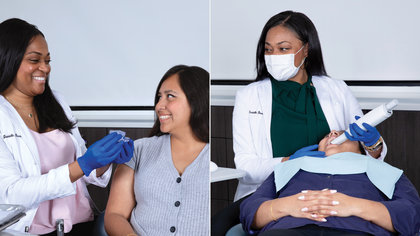Select “PlaySafe triple” as the foil.
Everything You Need to Know About Sports Mouthguards
If you have an athlete in your practice, you likely have a sports mouthguard patient.

Every year, more than 5 million teeth are traumatically dislocated from the root during sports activities. Enough teeth are damaged in high school sports alone to cost an estimated $500 million annually in dental procedures, according to research published by the University of Michigan School of Dentistry. Sports mouthguards are generally unpopular among most student athletes due to their bulk, discomfort and poor fit. It is estimated by the American Dental Association that only two-thirds of student athletes wear them despite their requirement in most sporting events.
In order to provide clinicians with everything they need to know about sports mouthguards — and the information they need to encourage athletes to wear them — this blog post will cover the importance of sports mouthguards, the classification and styles of these devices, and step-by-step instructions for in-office fabrication.
The Importance of Sports Mouthguards
Not all sports mouthguards are created equal. The form and function of a sports mouthguard is determined by not just the amount of coverage of the teeth and oral structures but also the materials, personalization technique, and method of manufacturing.
The ADA is unequivocal in its support of sports mouthguards, due in large part to the lifetime cost of treating an avulsed tooth — which is estimated between $10,000 to $20,000, depending on the severity of the condition and the number of teeth involved.
When an athlete experiences this severe injury, it can be a distressing medical event. In most cases, a trained dentist can replant the tooth with minimal impact if done with care. If a hopeless tooth has resorptive lesions on it, single-unit implants are an increasingly popular option. For younger athletes, the restorative treatment may need to be redone several times. When compared to the cost of an acceptable sports mouthguard, financial implications alone make sports mouthguard use an important factor in oral protection.
The ADA has suggested that athletes wear sports mouthguards for the following sports:
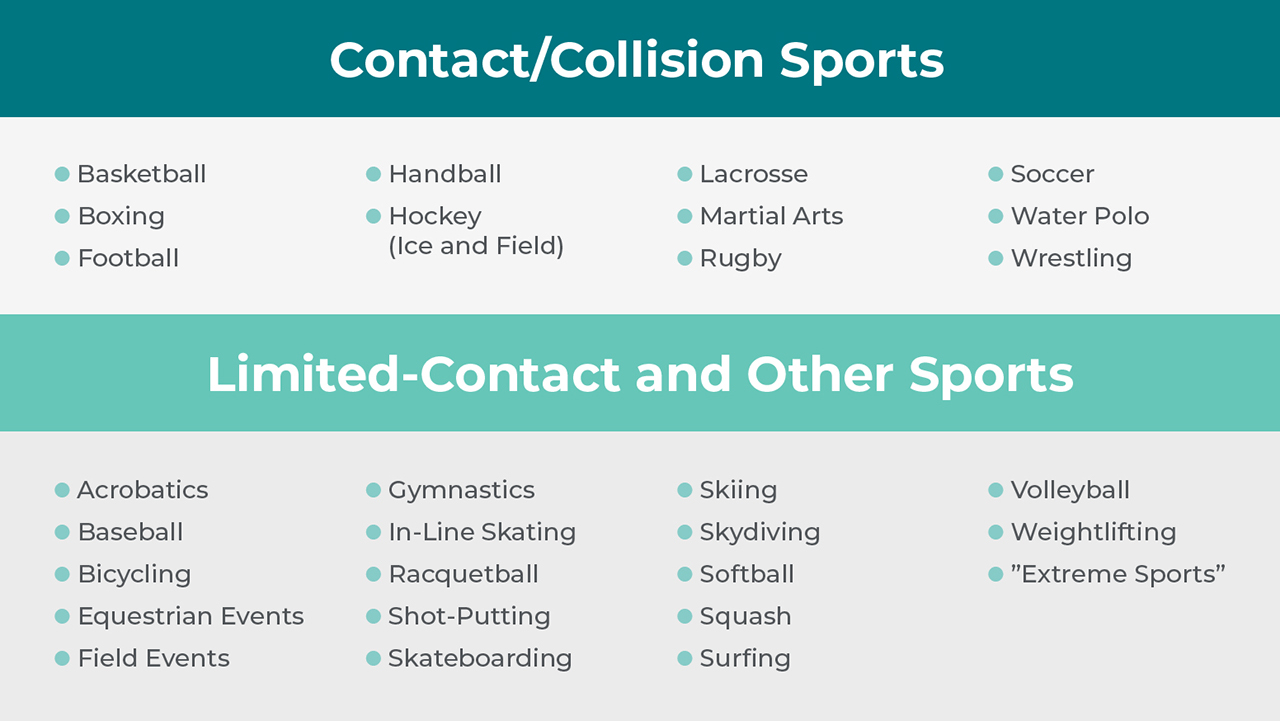
Sports Mouthguards Defined
A sports mouthguard is defined as a pliable plastic device that is designed and fabricated to cover the maxillary or mandibular teeth and is worn to reduce potential injury to oral structures during participation in sporting events. These devices can vary in form and effectiveness.
The mouthguards that are generally in use are over-the-counter boil-and-bite mouthguards and patient-specific mouthguards fabricated by a dentist.
Over-the-Counter Boil-and-Bite Mouthguards
These mouthguards are generally inexpensive and are available from most sporting goods stores and pharmacies. Out of the package, they are shaped to cover the teeth but are not formed to the teeth in any way. They do not require specialized fitting, other than trimming the length of the coverage with a pair of scissors. They are only held in place by the opposing dentition, which leads to difficulty speaking and breathing. Because of this discomfort, the athlete often spits the appliance out to hang from its strap or sticks it in their pocket until the game official notices.
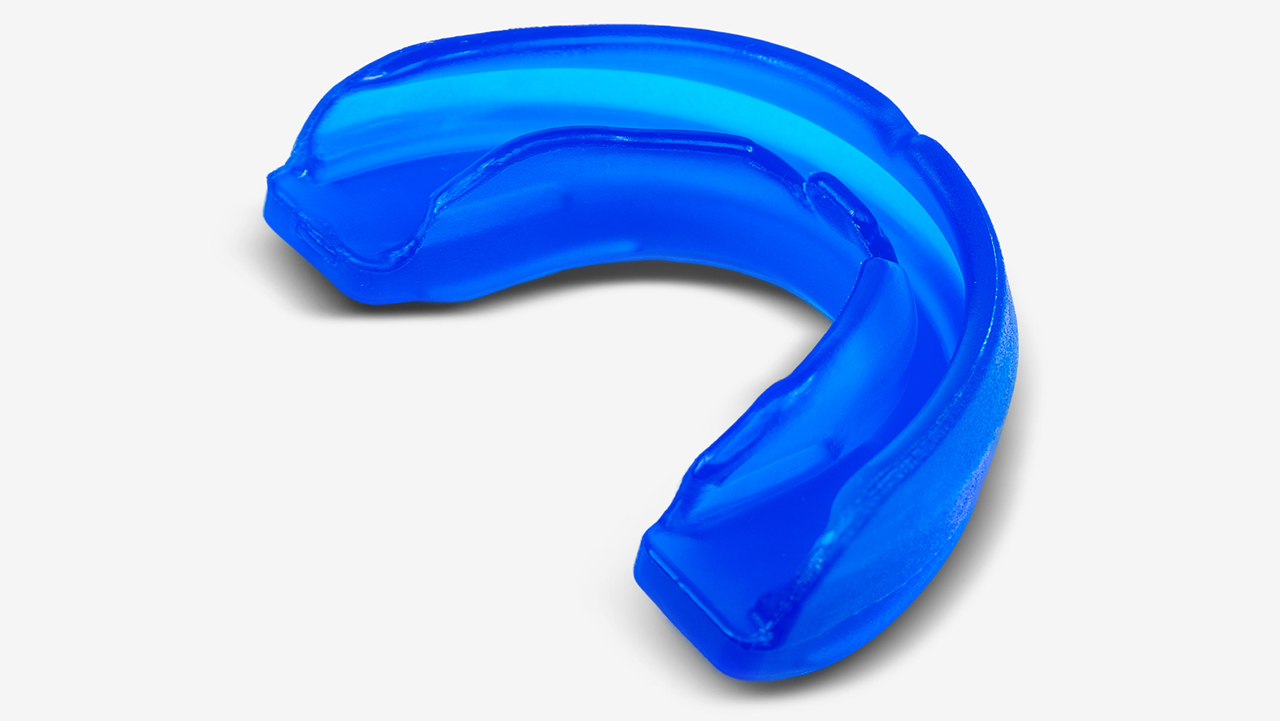
“When an athlete receives a blow during an athletic event, the [boil-and-bite mouthguard] tray is forced rearward, and it contacts only a few of the teeth and only a portion of the soft tissue. The result is that the forces are not distributed evenly to the oral tissues. These mouthguards may be more harmful than not wearing a mouthguard at all.”
– Gordon Christensen, DDS, Founder and CEO of Practical Clinical Courses (PCC) and Cofounder and CEO of Clinicians Report® Foundation (CR)
Boil-and-bite appliances can be formed to the teeth in a few minutes simply by dipping them in boiling water and having the athlete bite into them. The warm plastic will form to the teeth, but the overall fit is poor. Nonetheless, game officials will accept these mouthguards as adequate protection. These are the mouthguards that players can be seen chewing or hanging out of their mouths during breaks in play.
 During sports activities, mouthguards are also key to protecting orthodontic appliances.
During sports activities, mouthguards are also key to protecting orthodontic appliances.
Boil-and-bite mouthguards are designed to only last a few months, but some athletes tend to use them beyond their intended lifespan after they have been chewed through and offer little protection. According to Dr. Gordon Christensen, “These mouthguards are an unacceptable choice.”
Patient-Specific Sports Mouthguards
Dentist-made, patient-specific mouthguards come in a variety of styles and designs. Practitioners can even make these appliances in team colors or with emblems and stickers between the layers to further personalize the device. Generally, they are vacuum-formed in the dental office or lab-fabricated using a thermoformed process. One of the most popular sports mouthguards on the market is the PlaySafe® Sports Mouthguard manufactured at Glidewell.
The PlaySafe Sports Mouthguard is a thermoformed, professional-grade device that offers six layers of protection, as well as comfort, retention, superior fit and unique designs. This mouthguard can be prescribed for both professional and amateur athletes, making it truly versatile in function. When worn properly, PlaySafe mouthguards can prevent dental trauma like dislocated teeth as well as protect orthodontic conditions, such as braces. The distinct layers of protection make it simple for clinicians to prescribe a sports mouthguard that is sure to meet each athlete’s specific needs:
- Junior – 1 layer EVA with added incisal/occlusal protection
- Light – 2 layers laminated EVA (3 mm thick)
- Light Pro – 3 layers (1 hard) laminated EVA (3 mm thick)
- Medium – 2 layers laminated EVA (5 mm thick)
- Heavy – 2 layers laminated EVA with power bands (5 mm thick)
- Heavy Pro – 3 layers (1 hard) laminated EVA (5 mm thick)
In-Office Fabrication of Sports Mouthguards
Patient-specific fabrication of sports mouthguards can be time-consuming and expensive for both the dentist and the dental laboratory. Some dental offices have chosen to reduce the cost of fabrication of these appliances by bringing appliance fabrication into the dental office. The Erkoform-3dmotion device (ERKODENT® Erich Kopp; Pfalzgrafenweiler, Germany) is one of the nation’s most popular automated thermoforming devices for fabricating sports mouthguards in the dental office.

In addition to thermoforming sports mouthguards, the Erkoform-3dmotion can fabricate bite splints, retainers, bleaching trays, orthodontic appliances and more. It uses a vacuum technique to thermoform and imprint the opposing bite for optimum fit. No external compressed air supply is required.
Step-by-Step PlaySafe® Fabrication Instructions

Select “List of Foils.”
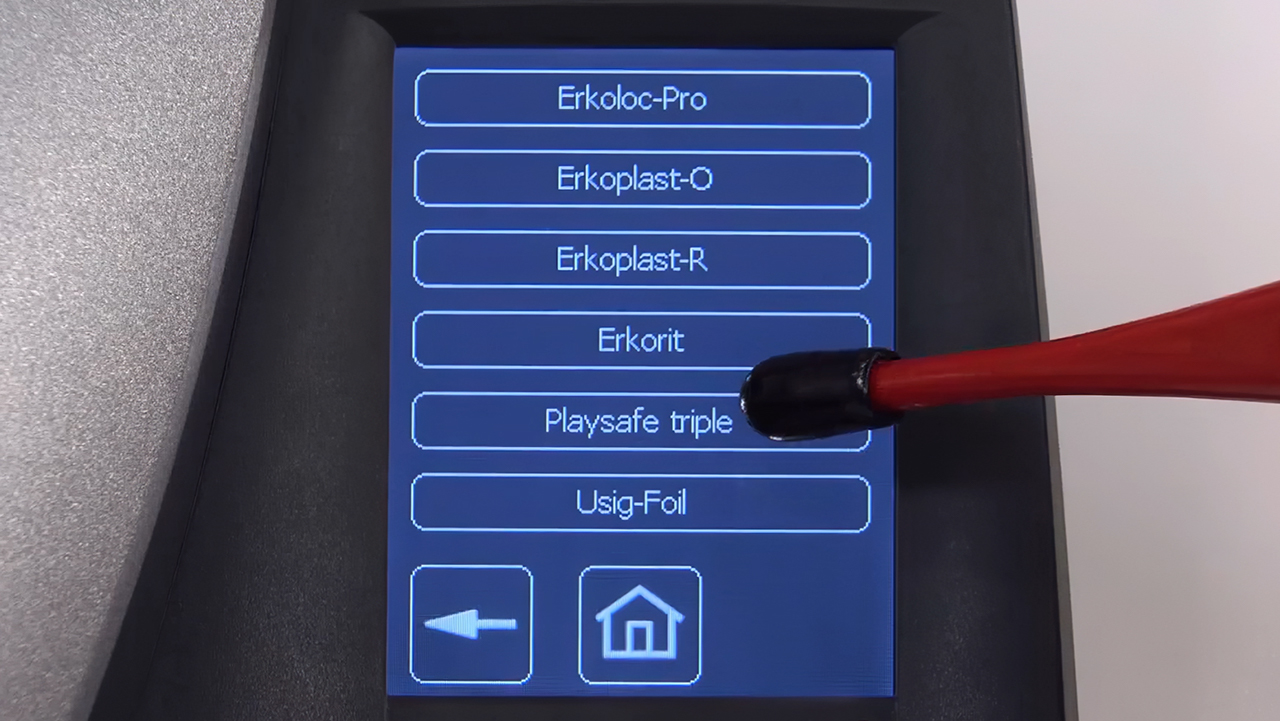
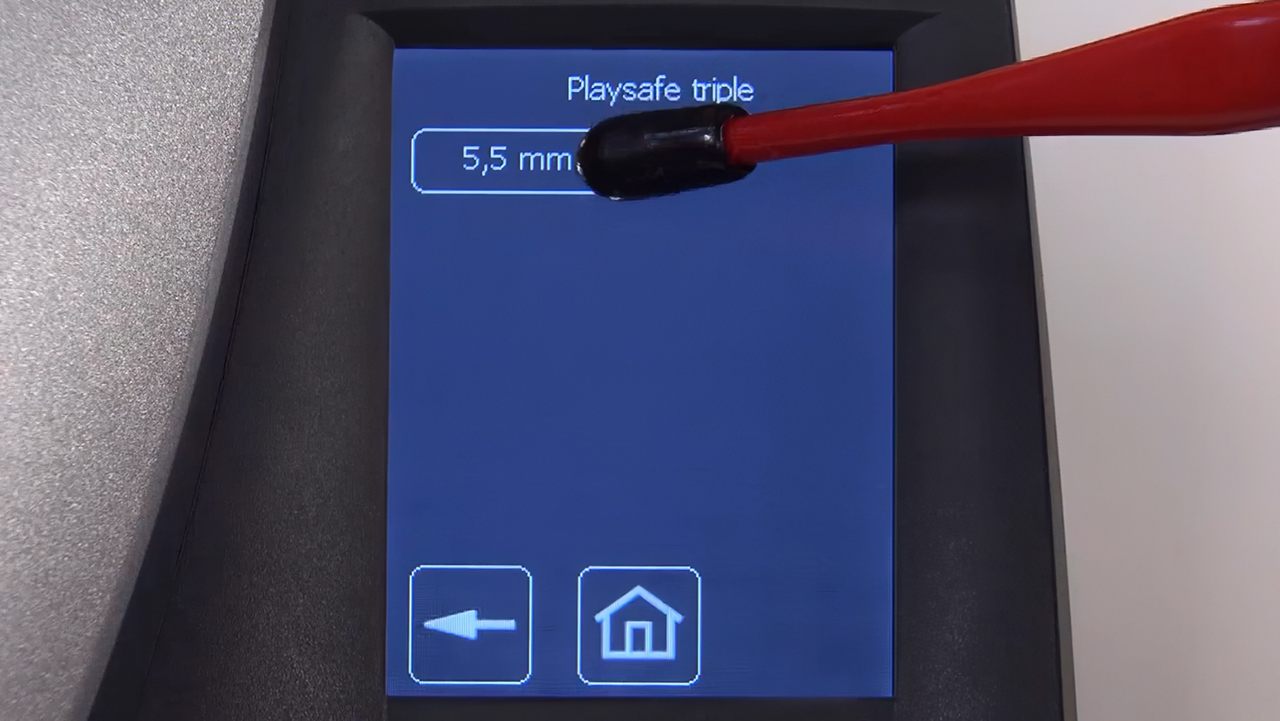
Select the “5.5 mm” foil.
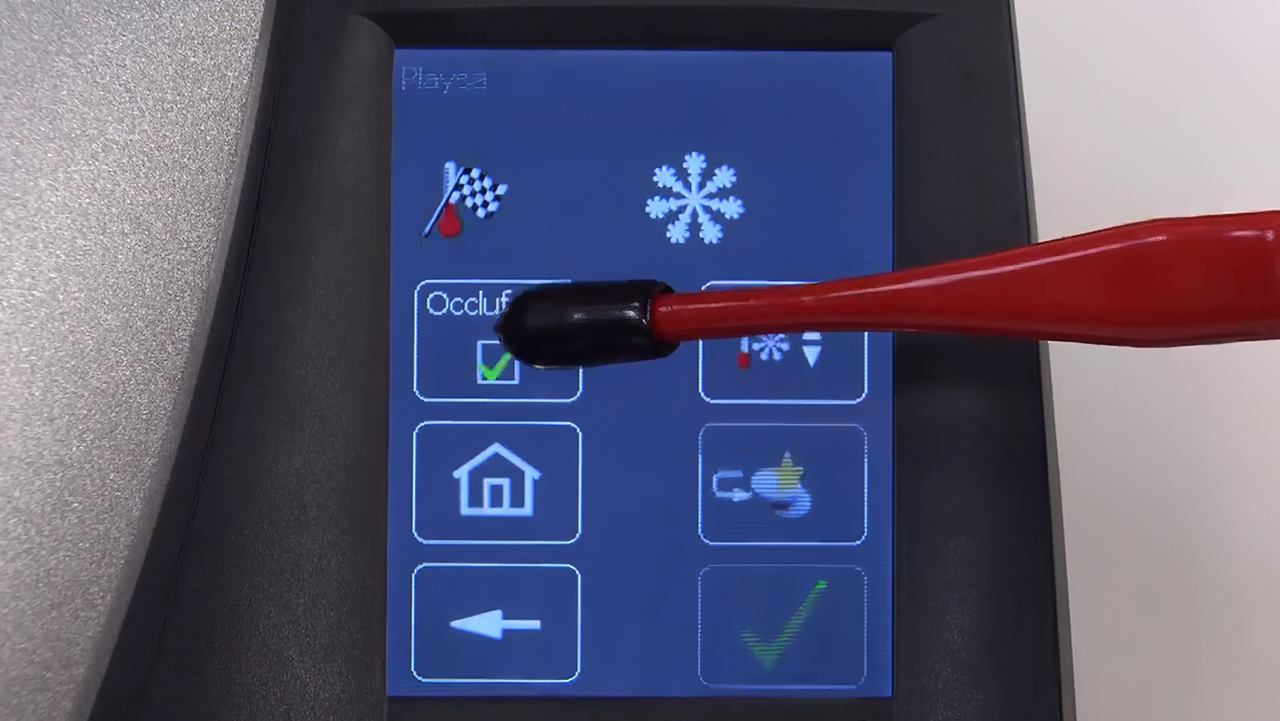
Click the “Occluform” checkbox and watch the short video on the screen that details the next steps in the process.

When affixing the plaster model, ensure the model is tipped so the anterior teeth are slightly elevated above the posterior teeth.

Next, add the granules to the pot until the thermoforming area with an additional three millimeters is visible. Any hollow areas under the model must be filled with granules.

Without disturbing the granules, place the filled and inspected pot into the receptacle on the Erkoform-3dmotion device.

Ensure that the dot on the pot is aligned with the dot on the frame of the Erkoform-3dmotion device.

Install the face chuck onto the Occluform model mount.
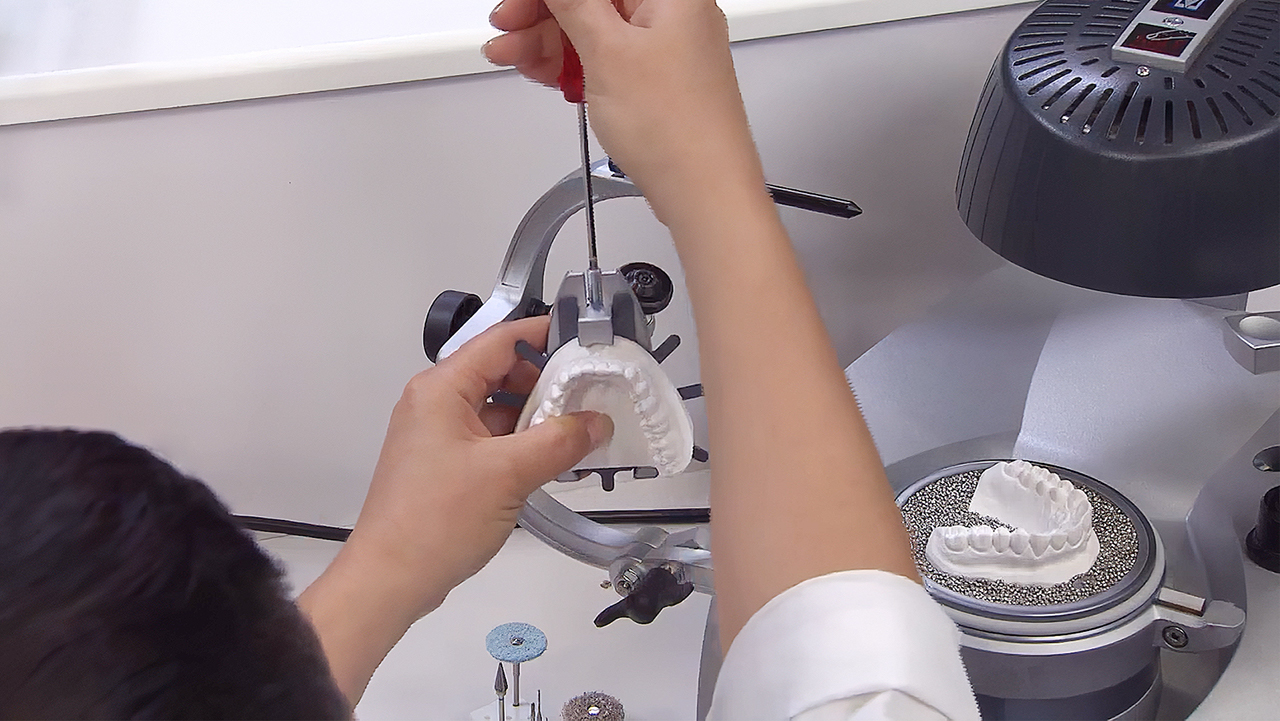
Attach the model to the chuck and tighten the fastener.
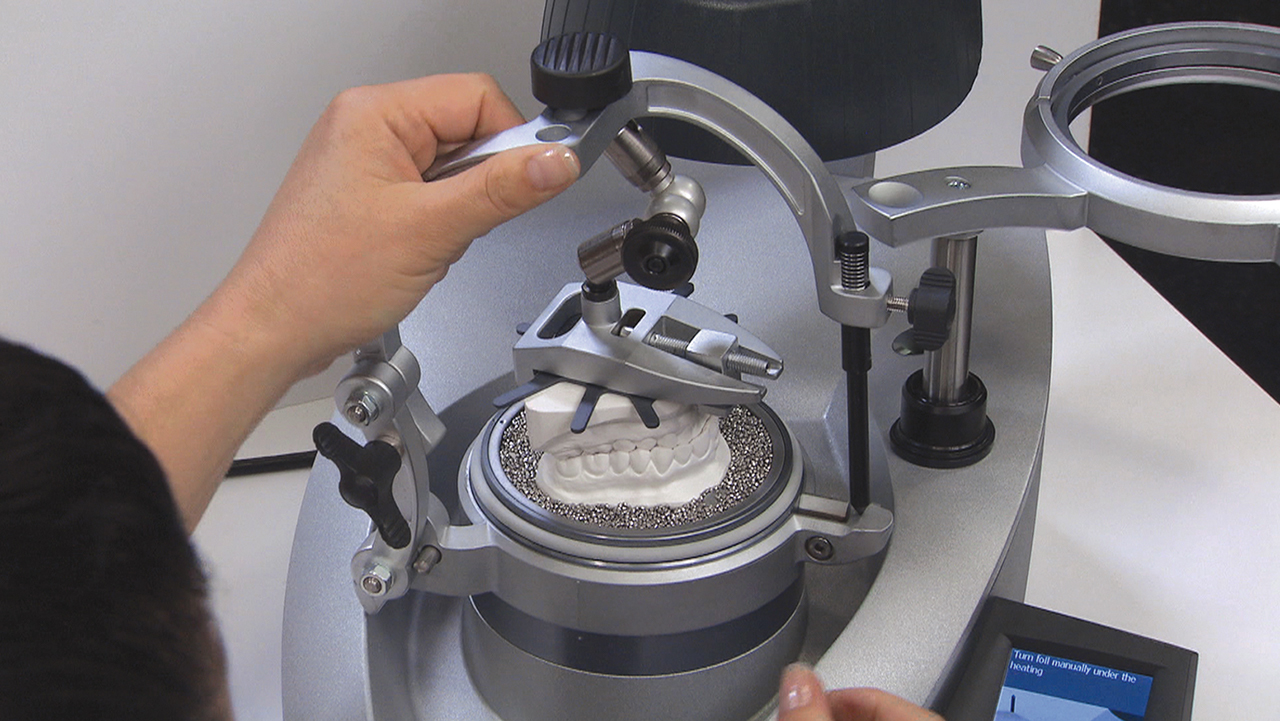
Adjust the Occluform so that the upper model is in occlusion with the lower model. Adjust the thumb screws to make the occlusal position accurate. Once aligned, tighten the thumb screws.
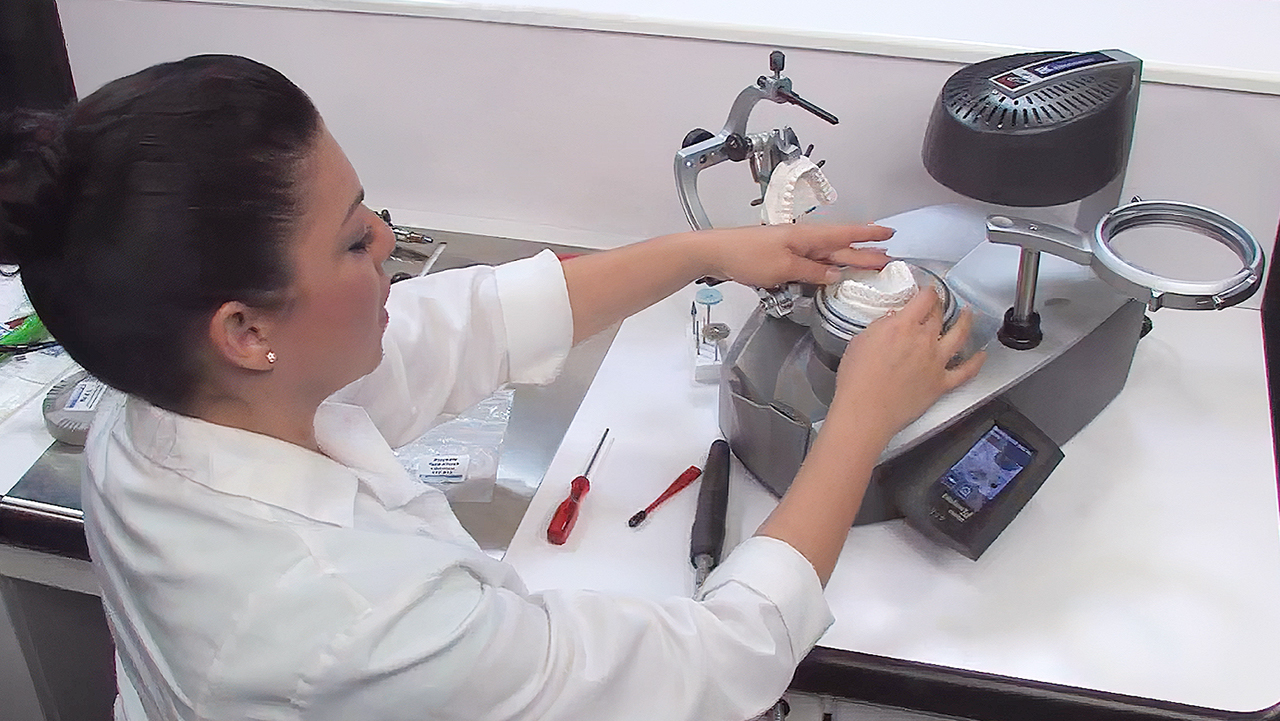
Place a cover template over the model to cover the granules.
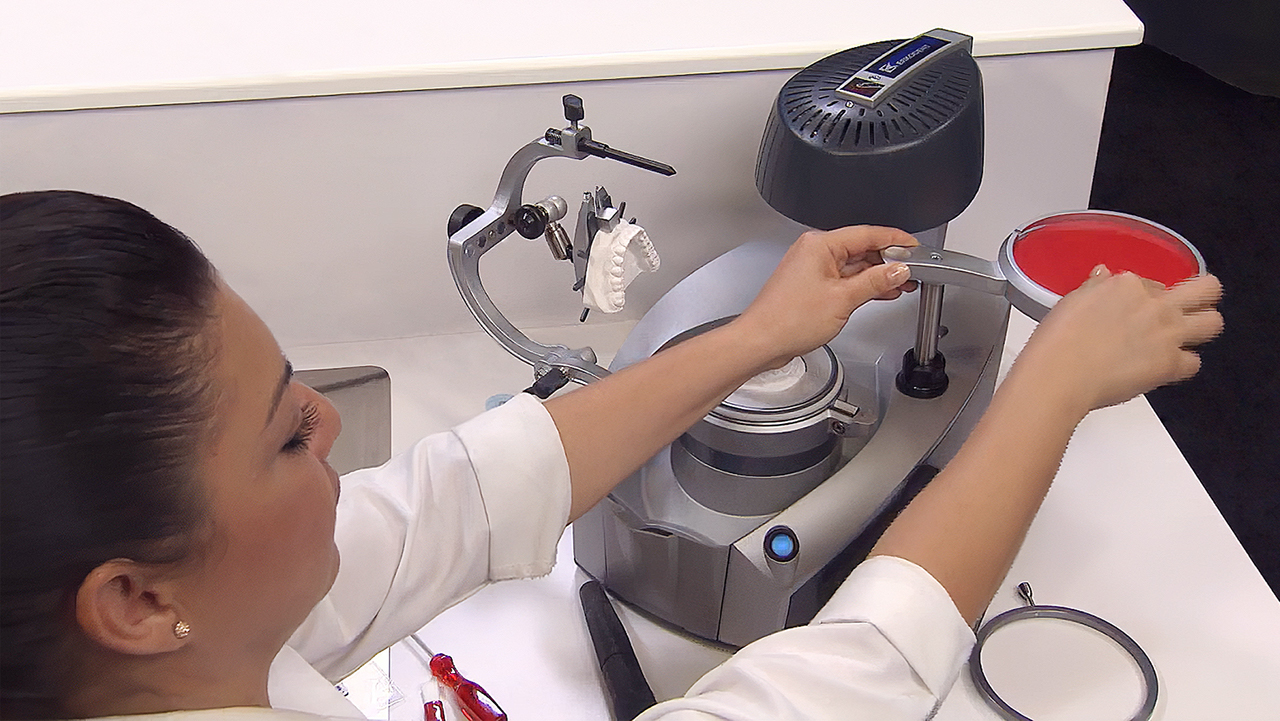
Remove the securing ring and add the PlaySafe foil to the foil holder. Return and tighten the securing ring, holding the foil in place.

Rotate the ring under the heating element. The machine will now raise the temperature to the optimum level.

As the foil heats up, add the bite spacer to the bite chuck.
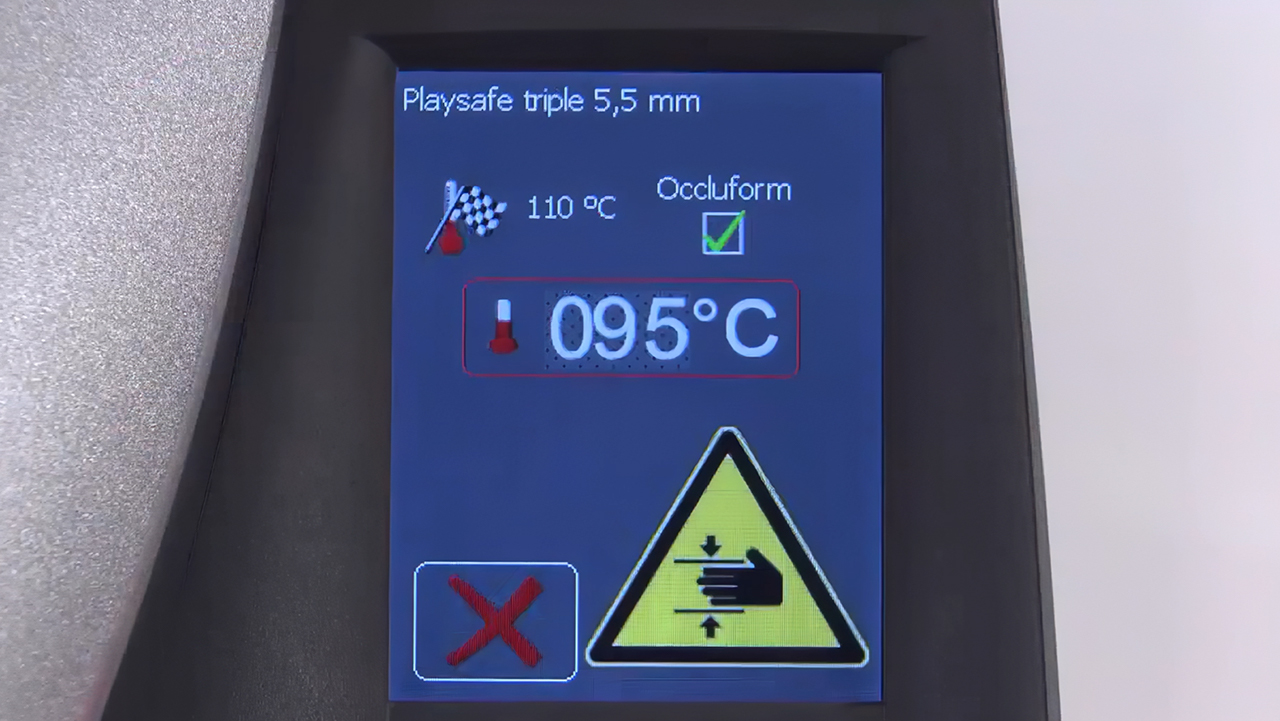
Once the optimum temperature has been reached, the machine will lower the foil onto the model and the vacuum will remove any air in the pot, allowing the material to be thermoformed.

Allow for one minute of cooling time. Then, the screen will show you how to use the Occluform.

Close the Occluform until the pin makes contact with the base.

After the cooling time has elapsed, the screen will instruct you to remove the Occluform.
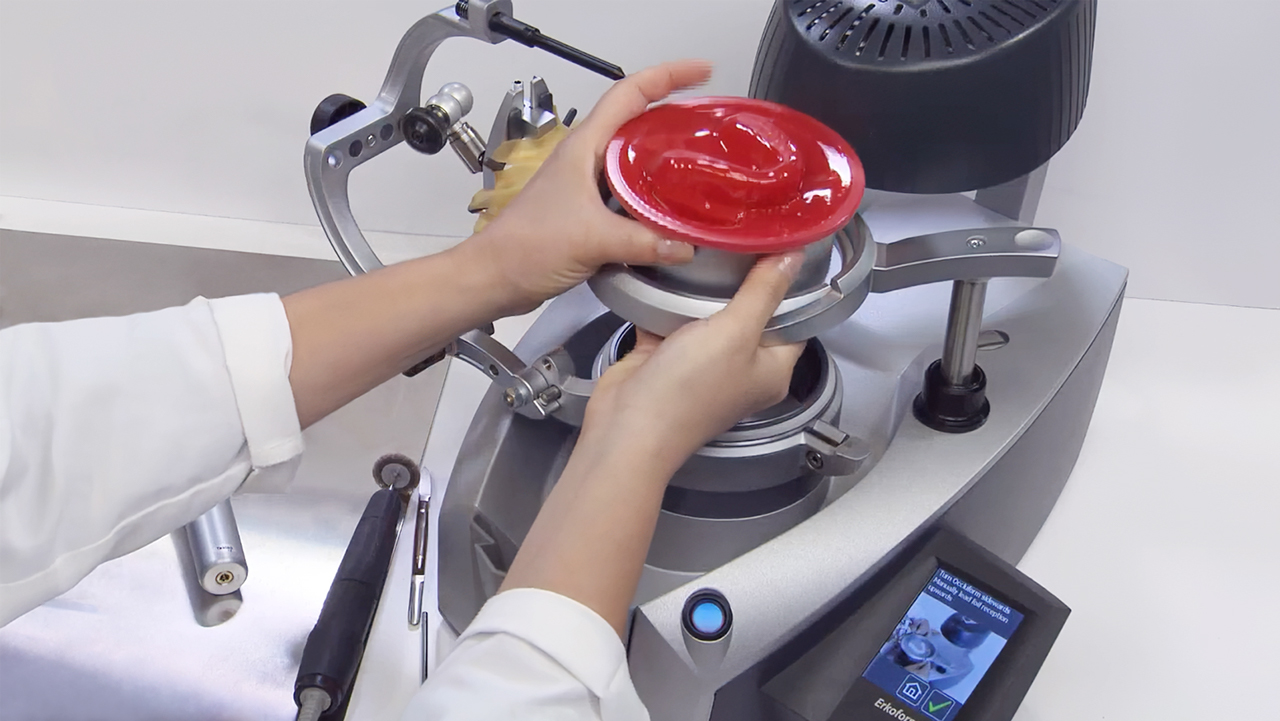
Remove the foil securing ring. Then, remove the thermoforming pot and appliance.
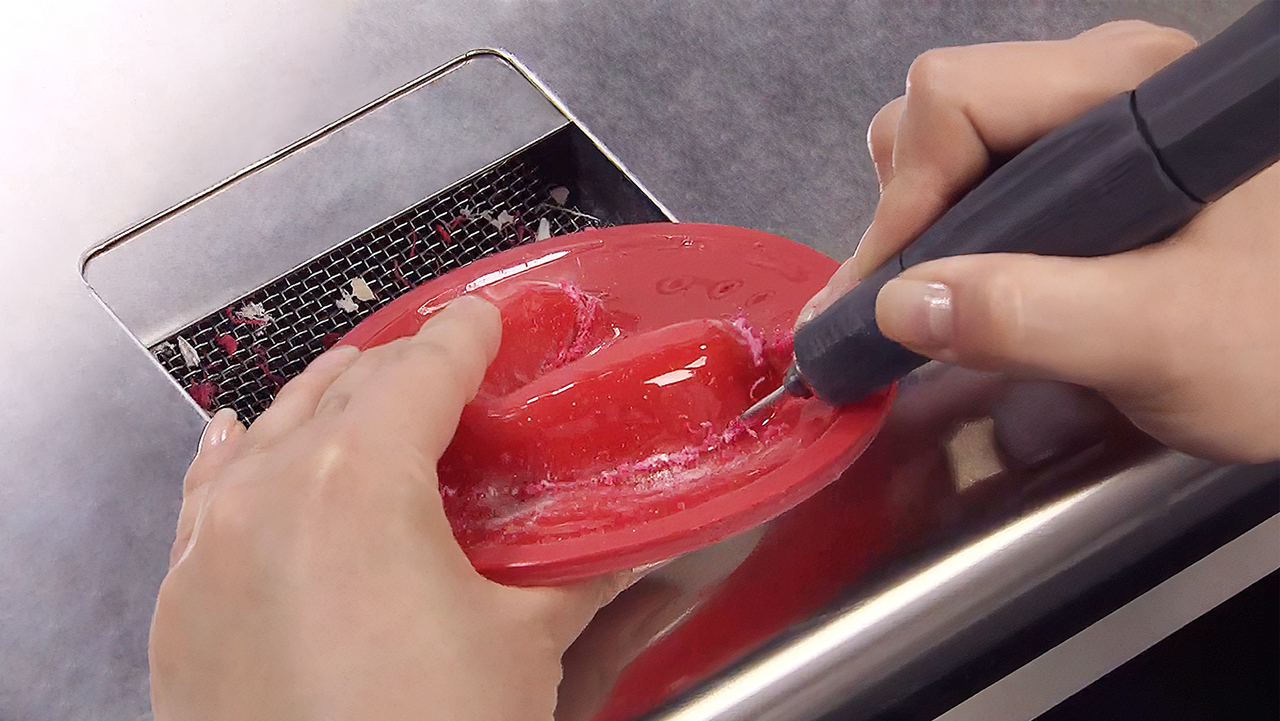
Using a low-speed handpiece with a fissure bur, begin cutting the appliance from the foil. It may be necessary to work around the appliance more than once to achieve a good result.
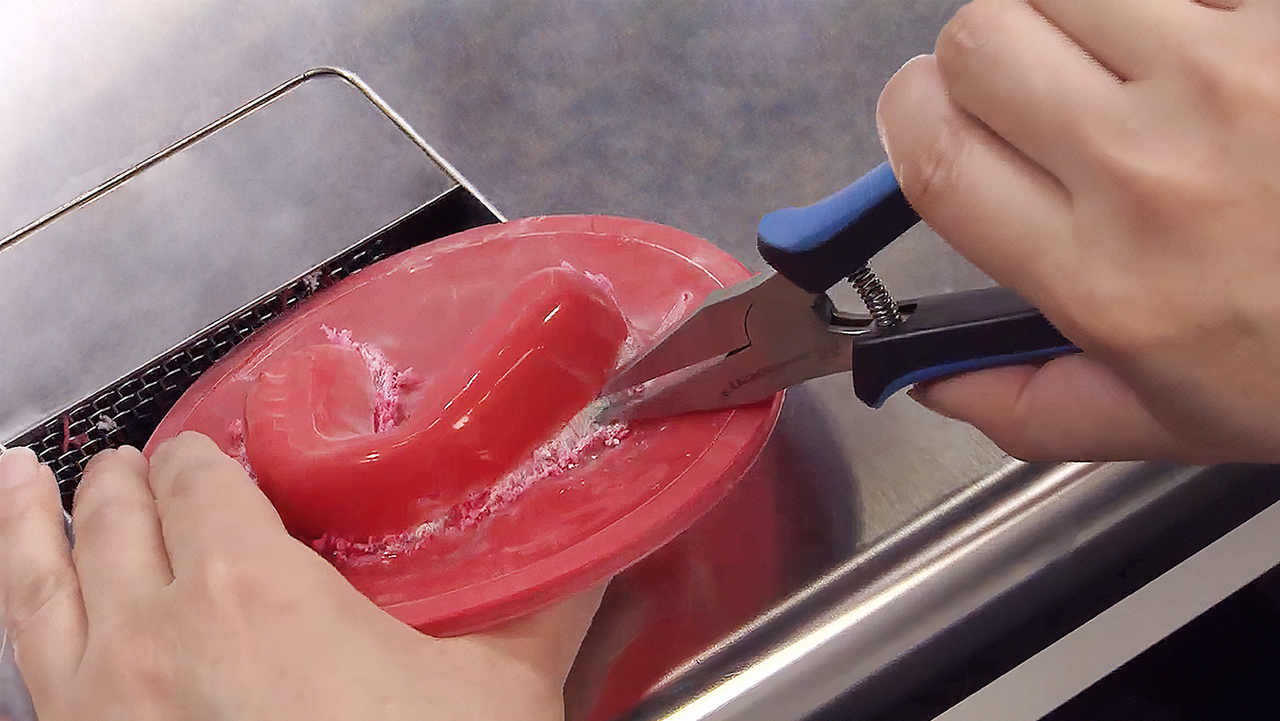
Use the take-off pliers to ease the finished appliance from the model.

Use a slow-speed handpiece with a carbide bur to smooth out the rough edges on the appliance. Make sure to cut out and shape the areas around the frenums.

Use a brown Lisko disk to further smooth and refine the appliance.
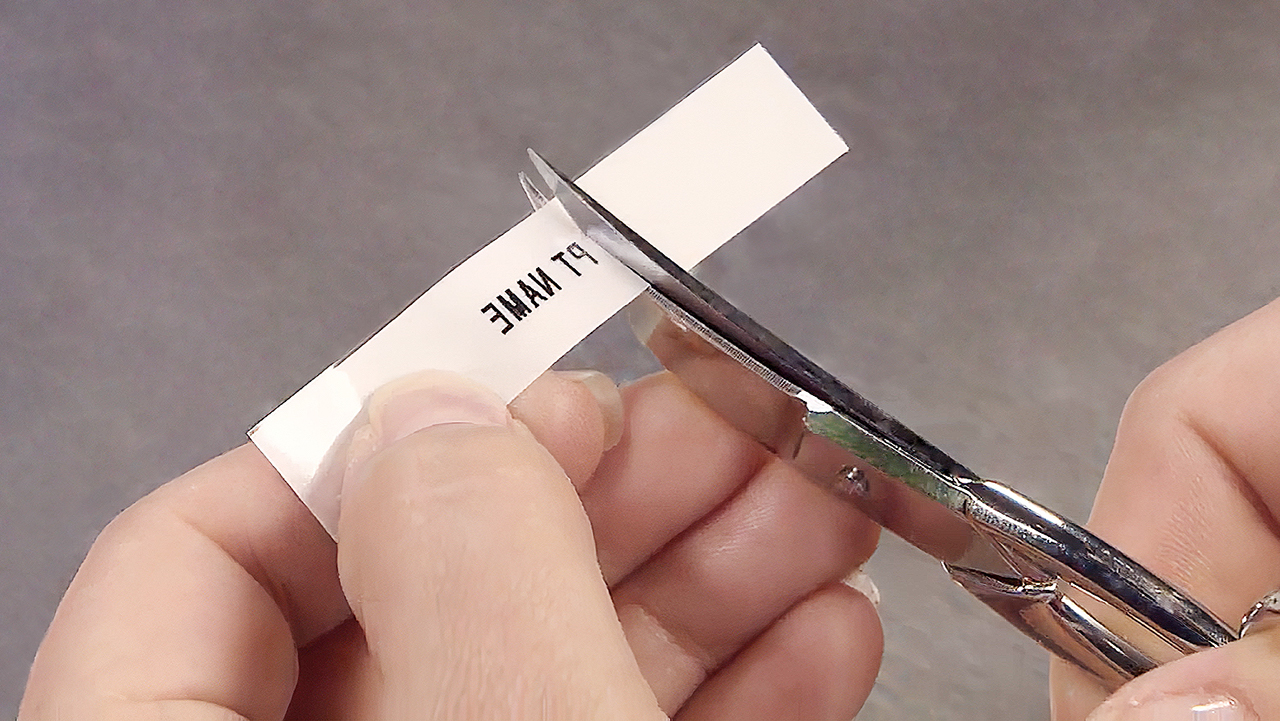
To add the patient’s name to the appliance, first laser-print the name in mirrored print mode onto a clear label.

Add the patient’s name to the clear PlaySafe triple label.
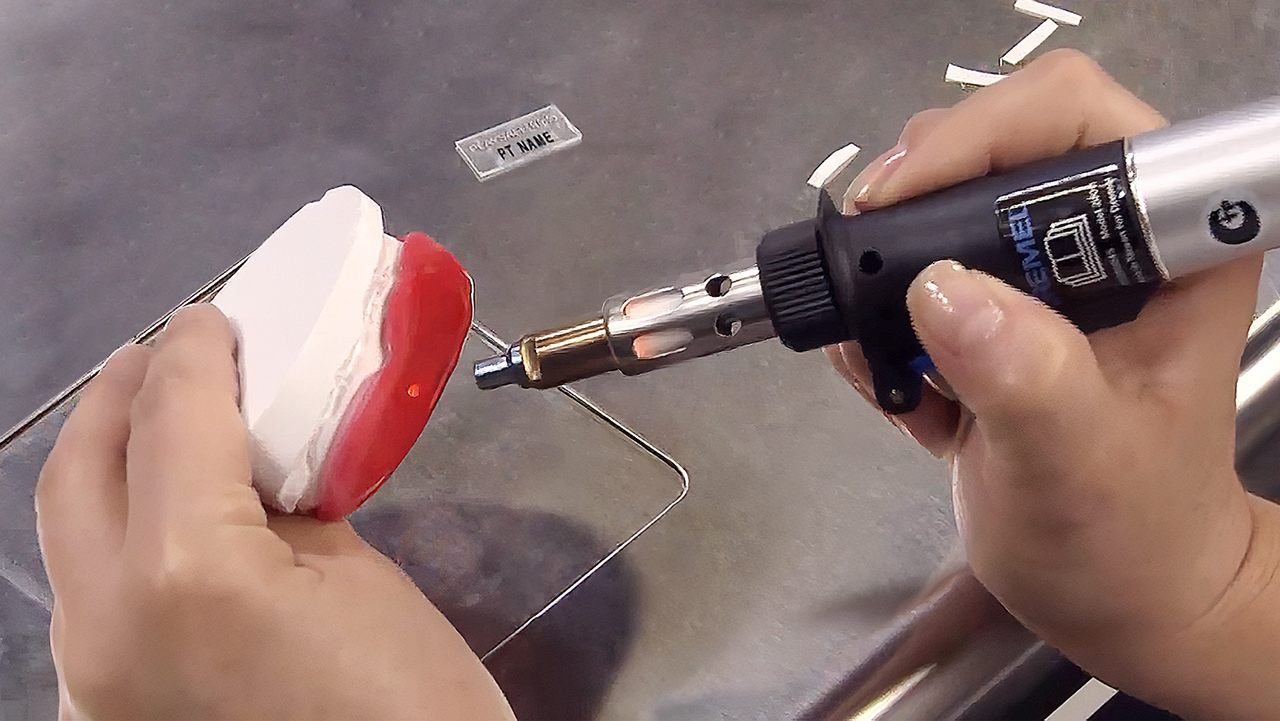
Use a hot air burner to soften the area that the label will be attached to.
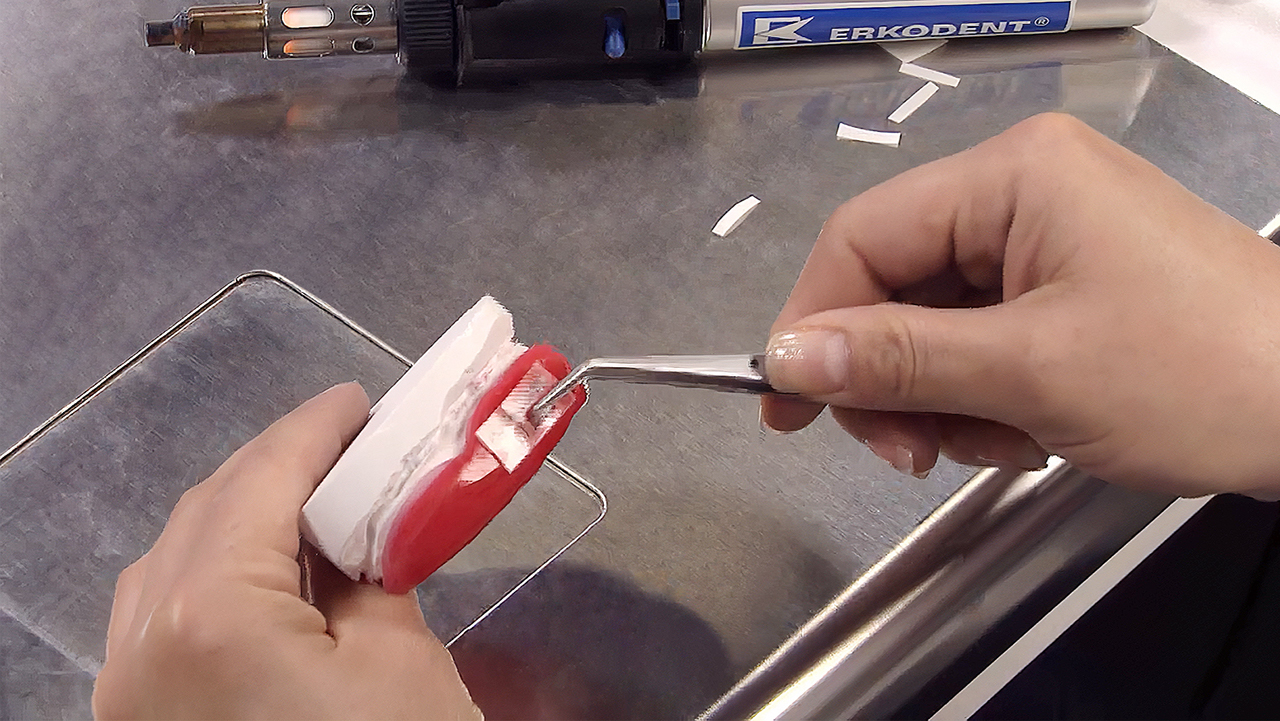
Apply the label with tweezers and gently press the label into the appliance.

Alternate heat and pressure with a UZF sheet to achieve proper look and feel.
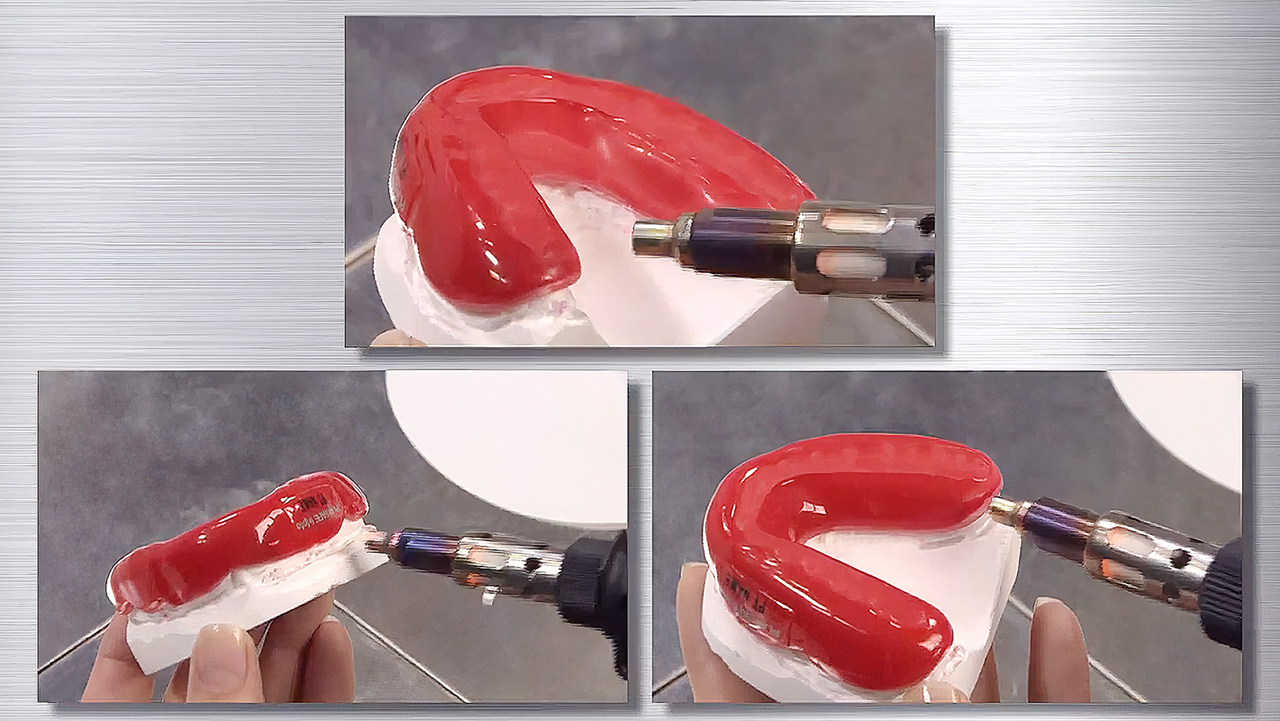
Use the hot air pen to polish and finish the appliance.
Conclusion
If you have an athlete in your practice, no matter their age or skill level, you have the opportunity to protect their dentition by prescribing them a reliable sports mouthguard, like the PlaySafe Sports Mouthguard. Don’t let your patients settle for a disposable boil-and-bite appliance that doesn’t offer the same level of protection as a patient-specific one. In the long run, patient-specific sports mouthguards are more financially beneficial to the patient and can prevent the trauma of having to experience a lost or damaged tooth.
More to Know
Dental CE
- Free on-demand CE course by Mark E. Abramson, DDS: “Introduction to Dental Sleep Medicine”
Dental Article
- Randy Clare, Glidewell: “How to Select the Best Anti-Snoring Solution for Your Patient”
ERKODENT is a registered trademark of ERKODENT Erich Kopp.
Send blog-related questions and suggestions to hello@glidewell.com.





